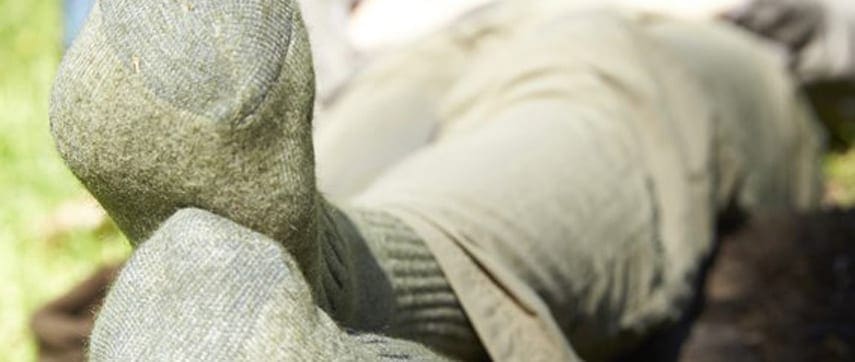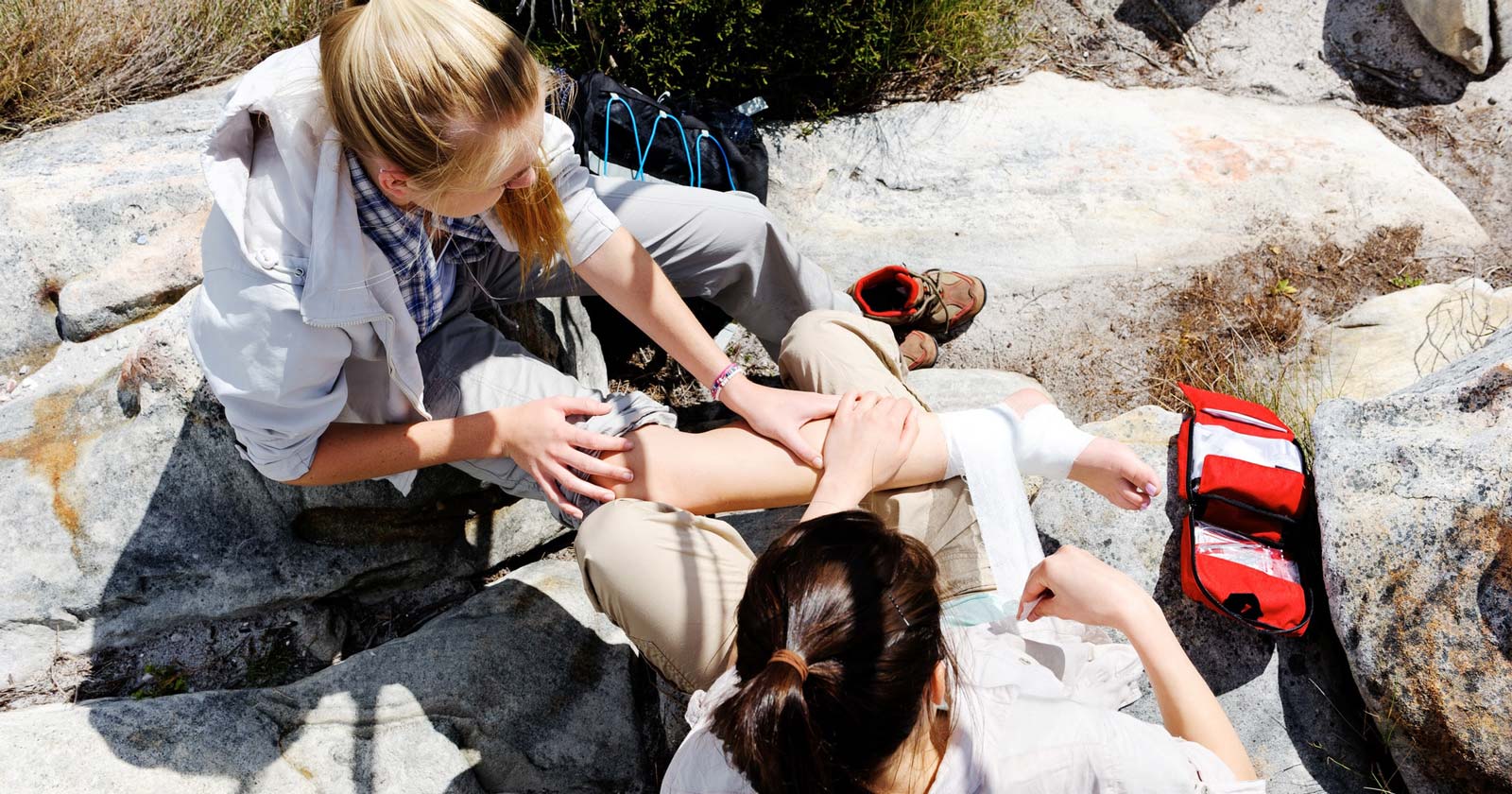Blisters can be painful and debilitating
Blistered feet, pain and suffering through each step is not the way you want to remember your adventure. Although sometimes unavoidable blisters are at least manageable if looked after early and properly. Having said foot care & blister prevention is far better than cure take steps to avoid blisters and enjoy your trip for what it is.
Don`t go hiking in your new boots straight away
All boots require some breaking in. Leather boots in particular tend to be quite stiff when they are new. It will take some time for the leather to flex freely and evenly. If you don`t break your boots in properly it may result in painful and debilitating blisters. Blisters can be a terrible affliction when you are out in the bush. For this reasons, we strongly recommend that your first walks are short ones. Better still, wear them around the house or down to the shops, before progressing to a short day walks.
If you are not used to wearing boots, it may also take you some time to get used to the heavier feel and extra ankle support. Softer lighter weight boots are available and may be a good option for first timers. (depending on where you are heading.) If your first trip is to be more than a short stroll, taking some running shoes in case you need to change is a good idea.
Quality Socks are just as important as quality boots
One factor in footwear and foot care that is often over looked is the importance of quality socks. Sock technology has come a long way from your standard wool or cotton blend. You just have to walk into a Paddy Pallin store or go online to see our vast range to see how seriously we take Socks.
Many people prefer to wear two pairs of socks and this is certainly a good idea if your boots are new. The best combination is a light liner sock under a heavier or technical sock (two thick socks may be too hot). A heavier technical sock provides the insulation, shock absorption and support. A lighter liner sock will help keep the foot dry and prevent blisters, particularly if it is made from a fabric which has good moisture transfer properties. Try a merino wool or polypropylene liner in cool conditions, or a Coolmax liner in warm conditions.
Keep in mind that the thickness of the socks you choose will affect the fit of the boot. So when fitting the boots in the store you should always wear socks similar to those in which you intend to walk. Lace boots firmly (not tightly) to help prevent any movement.
Blister Prevention
Blisters are formed by friction, heat and sweating. While these factors are very much relevant to blister formation, blisters are actually caused by excessive stretching in the skin (called shear). Once a blister forms, it can be painful and debilitating. Blister prevention is key to making your walking experience much more enjoyable.
Below are some tips on how to protect your feet
Stay hydrated: Be sure to stay properly hydrated including sodium replacement if needed.
Shoes: Your shoes must fit properly to avoid blisters. Too snug or too loose is always a problem. If you have not worn the shoes you wish to purchase before visit a Paddy Pallin store and see one our professional staff to make sure you are choosing the correct boot for your foot and purpose.
Otherwise ensure that there is a 10mm space between your longest toe and the end of your shoe. Be sure that you have enough room to wiggle your toes inside the toe box, and your heel does not slip when you walk.
Choose shoes that breathe well.
Inspect the inside of your shoes for seams or worn areas that might produce extra friction.
Socks: Do not wear socks that are too worn. Thin areas and holes are very likely to produce hot spots and blisters.
Do not wear untested socks on a long walk and never wear unwashed socks. Also follow manufacturer’s washing instructions for the best results.
When walking distance carry a spare pair of socks. Change during your walk if your feet become sweaty or wet. (Tip: dust the inside of your spare socks with talcum powder and place in a ziplock bag).
Keep Dry: Using powder along with the right sock can really help. Use foot powder, talcum powder.
Lubricant: Many walkers use lubricants on their feet it is very common for ultra marathon walking. Body Glide is a great product for reducing friction and is available from Paddy Pallin stores or online.
Blister Blocks, Second Skin: If you have specific places that are prone to blisters you might try applying one of these prior to your walk. These items can be used as a preventative, or to provide cushion and protection after a blister has formed. Blister kits are available from Paddy Pallin stores or online.
Wrapping and Taping: Tape any pressure points or hot spots before the become blisters. Wrapping toes with moleskin or taping feet with athletic tape is also a common practice. If you wrap your feet it is important that the tape is applied smoothly (no wrinkles) and not too tight. Ultra walkers might tape their entire foot, but most walkers only need to tape up hot spots.
Below are two taping techniques expertly demonstrated by the team at SPORTS PODIATRIST that can be used for preventing blisters.
Hopefully using a combination of the preventatives above you will come away blister free. It is important to apply the products prior to your walk if you are prone to blisters. You can also carry supplies with you on your walk. Stop and apply as soon as you feel a hot spot to prevent a blister from forming.
Already experiencing blisters? Find out how to look after them at our Blister Treatment article.
Author: Dave Casey
Photos: Oxfam Collection
Contributed by: Paddy Pallin








Carolyn Field ??
Jo Holmes thank you I’m obviously an Ultrawalker… “Ultra walkers might tape their entire foot, but most walkers only need to tape up hot spots.”
i did read the ultra walker bit & had a bit of a giggle ?